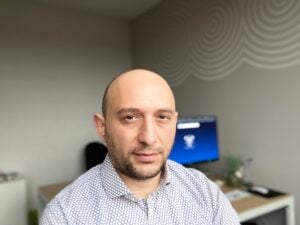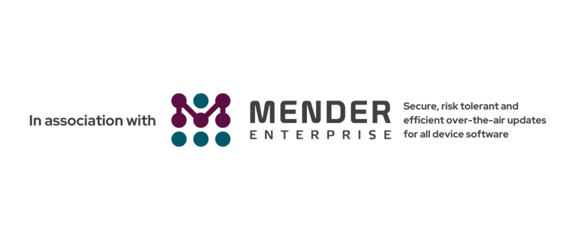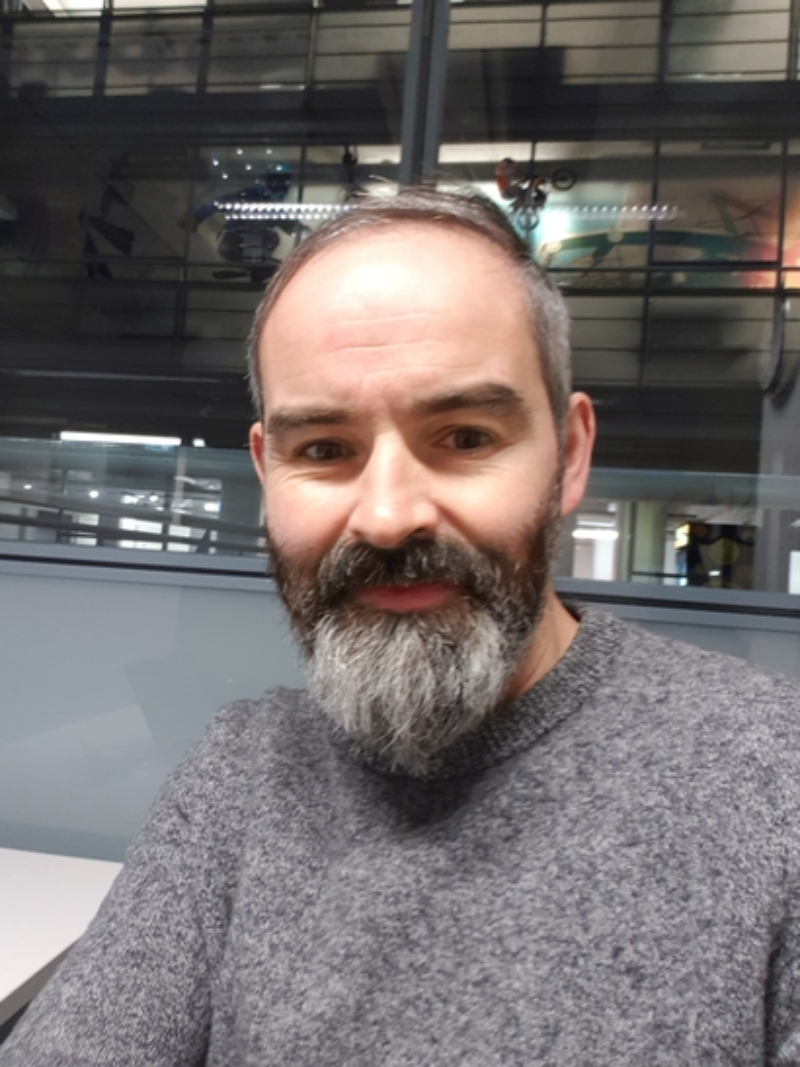Embedded intelligence in product innovation is a challenging topic but thankfully there are experts dedicated to the task. What does a department head of IoT at Philips Research typically do and what makes them tick?
The job title “department head of IOT” comes in various shapes and sizes and with a varying range of responsibilities. Some are responsible for technology management, others are corporate integrators looking to bring order and homogeneity to the hardware, software and processes that orchestrate business intelligence; and others are design thinkers and solution builders looking to use digital technologies to create value for the business and its customers.
To learn more about the role, we interviewed one of its high profile practitioners. Deha Kuran is an experienced Head of IoT with a background in software engineering and embedded systems innovation at embedded systems manufacturer NXP. Now, he leads a team of 35 researchers who help to bring in meaningful innovations to life, specifically from the IoT and “embedded intelligence” domain. “We shape the future of healthcare products at Phillips for improving people’s lives.” as he calls it in short.

As the word “embedded intelligence” has many different interpretations, Deha started by explaining to me his understanding of the term “embedded intelligence”. It can be a single digital technology or a combination of technologies integrated into the product or specifically designed to achieve high performance in a certain set of tasks. It can be an AI model, an algorithm, a software or hardware add-on, or combination of all of the above.
Deha is customer-centric and it is a key trait for a department head of IOT working in such a capacity as he is. His Linkedin profile describes traits as the “ability to accommodate, be the customer mentality, empathy and genuine interest in understanding what other people are trying to accomplish. Listen to others not only for answering but also for understanding.” These were indeed the endearing qualities that came across when I had the pleasure of interviewing him for this blog post.
Embedded systems ahead of the curve
As a department head of IOT and Embedded Intelligence, he sees himself and his team in a position “running slightly ahead, exploring uncharted territories” for the product lines in Philips Healthcare. His team is doing the investigations to find out how disruptive and promising technologies can be mapped to specific applications. The innovation ideas come from many sources across the business and the marketplace. Deha and his team investigates which IoT and embedded intelligence technologies could enable the applications to make use of them to life.
Key questions
I also wondered how he would decide which technologies should be selected for a digital roadmap? He asks himself 5 key questions to identify the disruptive technologies, and to keep it focused on the radar:
- What is the need that we are trying to address?
- What is maturity and applicability of the technology?
- How is the adoption in the market?
- How can it be integrated into the healthcare solution?
- Is it domain specific or cross-cutting?
According to him there is “no one size fits all” answer to those questions above. He starts with a forensic examination of customer need. Is there a fit there with the technology under scrutiny? Secondly, he tries to find market intelligence on feasible technologies. What is the market saying is the most suitable technology? Thirdly, he looks at the gaps in the current product portfolio to see if the technology is selected, will it fit in discreetly to add value? Only after these questions have been answered satisfactorily, will a technology get the green light to be added to the roadmap for further investigation.
Dealing with complexity
There is tremendous complexity in evaluating technology for product development. With the complexity, Deha believes that you can fall into the trap of going deep, very deep, too deep into the stage called “tar pit”. To avoid this, Deha recommends keeping the concept phase as lightweight as possible and doing things in an agile way. This also involves working out with the team in advance how much time should be reasonably spent on a technology investigation to get some useful results for getting buy-in from stakeholders.
Digital transformation
Thinking more broadly about digital transformation, Deha believes that it is not effective for an organisation to do it piecemeal. It must be a concerted strategic effort by the whole organisation. He remarks that “the world is moving at lightning speed and so organisations regardless of their size must act with great agility. They move quickly, pragmatically and compound the value of their efforts with many well researched prototypes based on the three dimensions described above.
Let’s repeat them..
- Is there a customer need?
- Is the technology feasible?
- Does it complement the product portfolio?
Regardless of the technology you choose, Deha advises to filter it out against these three criteria. This helps to define the milestones and the horizons on a technology roadmap. Deha also stresses that a large product organisation’s core business is no longer about creating core technology themselves but is more about using new technologies as they become available to create added value for customers.
Power of data
I asked him about embedded intelligence and the technologies that are exciting him. Not surprisingly he focussed on data. Deha enthuses “Federating the data is very exciting, creating a lot of smartness on premise, on edge, on cloud, the real potential is in the data, it is more expensive now than oil. The cutting edge technology that is capable of crafting this data will be a disruptive innovation into the application.” He provides a concrete example of the diverse commercial ecosystems that can emerge from data. Take a bicycle service, if you build smartness into this bicycle, you can help end users lock or unlock their bikes with their mobile. You can also provide them with diagnostic information to help them maintain their bicycle, give them geo location data to help with navigation and so on. But there is a second marketplace in the ecosystem for this data. “You can leverage and share this data to a third party where they can use it in a different context: here they could analyse for the highest density of bicycle usage, the peak hours when the bicycles are used, how often they need maintenance, do leasing, and create new business models from these services.”
Cutting edge is already here
Deha believes that the cutting edge developments in embedded intelligence are there, but that product organisations must combine these developments effectively with the data to unlock the true potential. As an example Deha points to the combination of AI and VR in industrial applications: “Factory operators are using applications based on the combination of these embedded technologies for predictive maintenance tasks where data from the field is being collected, trained in a model to check for outlier noise and temperature or any kind of environmental difference in processes on the factory floor. All in an effort to optimise production, product quality and lower downtime. Another application for the combination of AI and VR is guided assistance where in cases of malfunction, the operator is being guided on spot to make fixes, accessible from a single location.
Deha also sees ultra-wideband as an exciting technology. One of the common use cases for UWB is about in/outdoor positioning with high accuracy. This might create opportunities when combined with targeted marketing applications and routing applications which relies on the physical space. The U1 chip manufactured by Apple now supports the technology so shortly we will be welcoming a whole ecosystem of products populated with UWB technology. Think of it as the premature version of bluetooth, and imagine how many different products that we have today with bluetooth. Imagine yourself passing through an aisle of a supermarket and then you would receive discounts, or an application which guides you inside the supermarket on the shortest path for your shopping list.
Another application of the technology can also be used to track athletes with an AI model to see potential or likelihood to get injured based on movement. For instance in healthcare, hospitals can use the technology to provide precise indoor positioning so patients can be guided to the right locations quickly in clinical flow where they need to get diagnosed. Or in some cases, you want to make sure that your patient stays in the bed, but you don’t want to do 24/7 surveillance, for privacy reasons to begin with. Very real use cases is it not?
Updates into the future
Product extensibility is a key imperative and Deha encourages organisations to build the software into their products as strategic kernels. Not surprisingly he points to Tesla’s Model S released 8 years ago. These cars are still receiving OTA software updates, unlocking new features and creating new value. This is a boon for product business models. But “what organisations need to take care of is that the software platform can handle the updates, they need the vision to make the upfront investment, to build the infrastructure but they will see the pay back as long as the platform itself is gaining more smartness over the time with some new updates.”
Deha concludes by saying that he is passionate about driving such features over the air, but admits that many large companies are still cautious about it. “It is trivial but not as straightforward as it sounds, comes with hard commitments and a well thought process behind. It is a moving target but one organisations will have to catch up. What other choice do they have?”
For another interview with an IOT leader, read this article featuring an interview with Joerg Peschke, Director, Drives and Controls, at the MacGregor Group.

